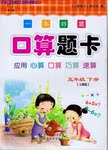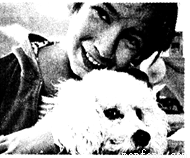题目内容
阅读下面短文,从短文后所给的A、B、C、D四个选项中, 选出可以填入空白处的最佳选项
“It’s nice having a friend,” said Mole (鼹鼠) to Rabbit as they sat talking in the sun one day.
“Oh, it is!” said Rabbit.“Very useful, too, ________ if you need help. ________, I think I’d like Bull(公牛) to be my friend.”
“But I’m your friend!” said Mole, feeling ________.
“Oh, yes,” said Rabbit.“You are good for talking to and laughing with, ________ you are too small. When I need help, I ________ someone big and strong like Bull.He would be a very good friend to have. It would be ________ shouting for him when I need help.”
Mole went off in anger.
“Oh,well,I need to ________ something,” Rabbit thought.
He moved along ________ he found a tiny garden.He had just started on his first leaf when there was a big ________. People were shouting and dogs were barking(吠叫).Rabbit was so afraid and in such a ________ to get away that he ran into the wrong hole.
The hole was too ________ and Rabbit got stuck(被卡住).He could not ________ at all.
“Help!” cried Rabbit.
Mole ________ him.He ran up to see what was the matter.
“Help!” cried Rabbit.“I’m stuck in this hole.”
“If you want help,” said Mole,“I’d better ________ Bull.”
“No!” cried Rabbit.“He’s no good! He’s too big to get into this ________.You’re just the right ________! Please help me,Mole!”
So Mole began digging around Rabbit.He ________ so fast that Rabbit was ________ soon.
“I’m sorry, Mole.I was ________,” Rabbit said.“I’m ________ I have you for a friend.”
And so the two good friends set off for home together.
1.A.onlyB.evenC.naturallyD.especially
2.A.In factB.At firstC.In generalD.At least
3.A.hungryB.hurtC.coldD.tired
4.A.whenB.becauseC.andD.but
5.A.askB.knowC.wantD.invite
6.A.quickB.niceC.strangeD.bad
7.A.sayB.showC.eatD.help
8.A.untilB.ifC.sinceD.though
9.A.silenceB.fightC.accidentD.noise
10.A.choiceB.mannerC.hurryD.situation
11.A.smallB.specialC.newD.great
12.A.stopB.leaveC.stayD.move
13.A.refusedB.heardC.expectedD.saw
14.A.getB.testC.followD.accept
15.A.gardenB.houseC.holeD.door
16.A.sizeB.shapeC.weightD.strength
17.A.ranB.workedC.passedD.grew
18.A.preventedB.changedC.freedD.controlled
19.A.wrongB.proudC.safeD.lonely
20.A.boredB.worriedC.hopefulD.glad
 一本好题口算题卡系列答案
一本好题口算题卡系列答案


 bring relief to your anxiety. It might even help you avoid a headache or other physical effect of anxiety and stress.
bring relief to your anxiety. It might even help you avoid a headache or other physical effect of anxiety and stress. lease stress because________.
lease stress because________.